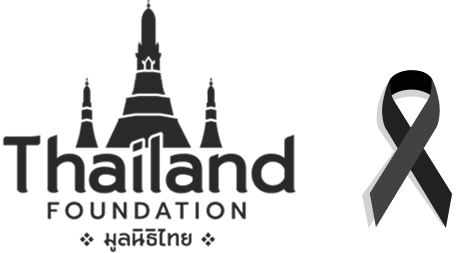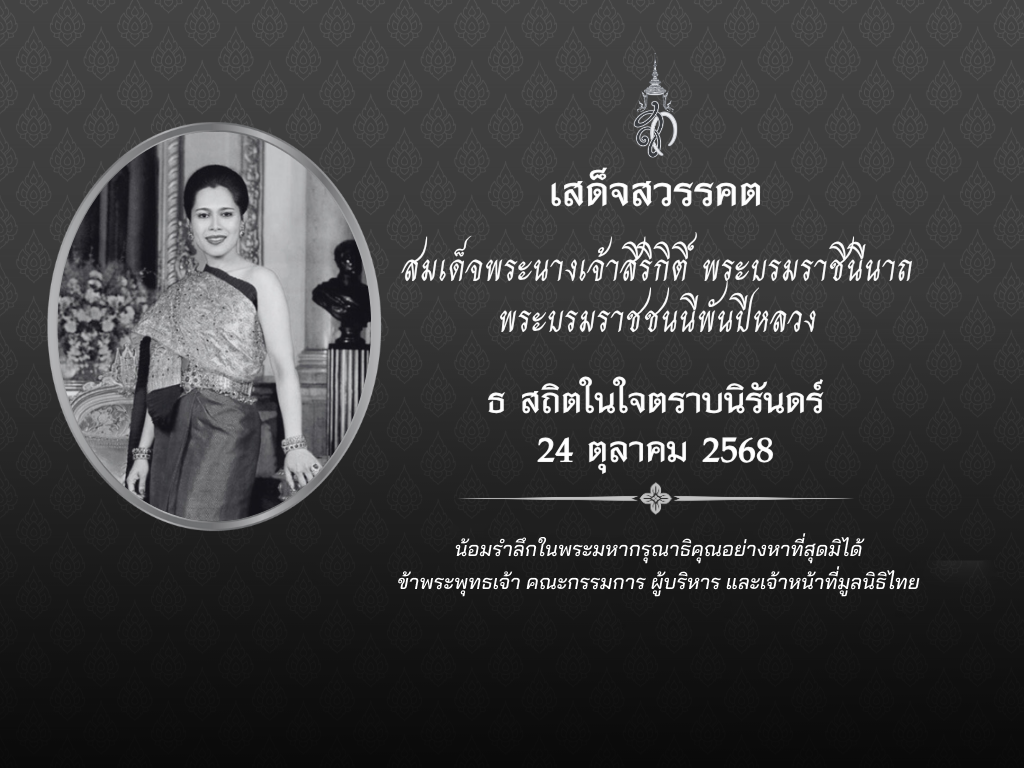
Ordination ceremony [cr. sanook]
Buddhism is an integral part of Thai culture. Thais believe that when a man turns 20, he should be ordained and enter a monastery for a period of time to study dharma, the teachings of the Lord Buddha. This tradition is considered to be a great act of religious service as well as a significant merit making occasion for the ordained’s family. It is a way for Thai men to express gratitude to their parents for raising and nurturing them. The ordination ceremony or Buat Nak (บวชนาค) in Thai language is, therefore, a very important rite of passage for Thai males.
In the past, Buddhist men generally stayed in the monkhood for three months during Khao Phansa (เข้าพรรษา), the Buddhist Lent period, which coincides with the rainy season. In ancient times, monks roamed everywhere to teach dharma. As they waded through rice fields in the rainy season, they often trampled on the commoners’ precious rice stalks by accident. Lord Buddha, therefore, ordered the monks to halt their pilgrimages during the rainy season. Instead, they were told to remain within their monasteries, studying and practicing dharma. This was also, of course, a good time for young men to be ordained to learn the teachings of the religion.
The chaotic lifestyle of today does not allow people to leave the worldly life behind for three months. The tradition has therefore changed. The monkhood period is shortened and varies from one week to 15 days or one month, depending on the time the person has available. Today too, ordination can be done at any time of the year, not only at the beginning of the rainy season.
Despite the shorter monkhood period, the ordination ceremony remains important. Known as Buat Nak, the ceremony involves many rituals, beliefs, and traditions.
From India to Southeast Asia
Southeast Asian culture is very much influenced by Indian beliefs, namely Brahmanism and Buddhism. Prior to the arrival of these beliefs, animism prevailed within the region. Over the centuries, influences from Indian religions were integrated with local beliefs, thus creating a unique culture and tradition.
The ordination ceremony is called Buat Nak in Thai. Buat means to ordain while Nak means naga, the mythical serpent or half-man, half-serpent in Hinduism. In Southeast Asia, nagas are considered to be divine, powerful, and highly respected.
Sujit Wongted (1945-present), a famous Thai journalist and historian, wrote in his 2011 book Nak Ma Jak Nai (Where Did the Naga Come From?), that people on both sides of the Mekong River have highly respected nagas. People believe nagas, the mythical serpent, created nature, prosperity, and stability. Nagas can also cause disaster and destroy towns, cities, and people. They also respect nagas as their ancestors.

Nagas are featured in many Buddhist stories [cr. Manager Online]
When Buddhism arrived in Southeast Asia, the concept of nagas was incorporated with Buddhist beliefs. A Buddhist tale has it that Nantopananta the naga prince was so interested in Buddhism that he wanted to become a Buddhist monk. As Buddhist rules allow only for humans to enter the monkhood, Nantopananta, being a serpent, was barred from ordination. Though the naga prince had to give up his ambition, he did ask Lord Buddha to call any person wanting to be ordained as a Buddhist monk by the name “naga”, in nod to his devotion to the faith.
Since then, naga has become an integral part of the ordination ceremony. The man who will be ordained is called a nak (naga).
Tham Kwan Nak: Blessing the Naga
In Southeast Asia, there is a common belief in kwan (ขวัญ). The kwan is a spiritual part of a person where one’s morale and psychological health resides. When major changes in life occur, the kwan can become lost, leading the person to fall ill. Similarly, when a man enters the monkhood, a significant change in life, the kwan can be affected. It is, therefore, important to bless the person to secure their well-being.
Before the ordination ceremony, usually on the eve of the ordination day, the monk-to-be is dressed in all white. The parents will shave his head and eyebrows as a blessing. This is followed by the Tham Kwan Nak (ทำขวัญนาค), a purification rite performed by a mor kwan (หมอขวัญ), a specialist in these rites.
At the ceremony, the family or mor kwan will prepare the offerings. These include a Bai Si (บายศรี) decorative banana leaf cone; banana leaves and colorful silk for the Bai Si wrap; nine candles; a bowl of holy water; a bowl of rice; seven betel leaves; auspicious food offerings, including khanom tom (ขนมต้ม) – boiled rice flour dumplings in white and red colors – , cooked rice, and boiled eggs; one young coconut; aromatic powder; aromatic oil; a tray of offerings – flowers, five betel nuts, cigarettes, a bottle of white spirit and 12 baht coins; and three incense sticks.

Tham Khwan Nak [cr. GotoKnow]
When the offerings are ready, the mor kwan will invite the nak, the family, and guests to the ceremonial area. The mor kwan will then recite verses explaining the spiritual benefits that all will receive from this ordination and invite angels to bless everyone. After that he will recount the sufferings endured by the parents in raising their child. This is to remind the nak to appreciate his parents and therefore seriously concentrate on practicing dharma during his monastic life to repay their sacrifices. The verses can be very moving and often make people cry.
The content of the verses then changes to the do’s and don’ts of monastic life. It is more like an introduction and a short orientation for the monk-to-be. The mor kwan recites another verse explaining the meaning of each offering and tells the nak to bring the bai si and offer it to the parents and elders. While presenting bai si, the nak asks the parents and the elders to forgive him for past actions that have irritated the family. In some areas, family members tie sacred threads around the nak’s wrist as a blessing.
With his important role in the ceremony, mor kwan is a highly respected profession and some folk singers adopt mor kwan as their second career.
Once the processes are complete, the ordination ceremony begins, mostly on the following day. A Hae Nak (แห่นาค) procession will be held to bring the nak to the temple for the ordination.
Hae Nak Procession
The concept of nak, Tham Kwan Nak and Hae Nak procession exists across Southeast Asia. Myanmar, perhaps, shares the closest traditions with Thailand.
Prince Damrongjanubhab (1862-1943), the brother of King Chulalongkorn the Great and a renowned historian, wrote in his book Tiao Mueang Phama (Travelling in Burma) that the Hae Nak procession in Burma was similar to that in Thailand.
In Burma (now Myanmar), the procession was based on the Mahapinesakrom, a Buddhist tale about one previous life of Buddha. In the tale, Gautama Buddha left his hometown on a horse for ordination. While leaving, his cousins and angels came to bless him while mara (demons) came to stop him. At a Hae Nak procession in Burma in those days, the nak had to ride a horse just as Gautama Buddha did in the tale, with the people participating in the procession pretending to be either angels or mara.

The colorful Poy Sang Long procession is the Hae Nak tradition practiced by the Tai Yai (aka Shan ) people in Thailand and Myanmar. [cr. Manager Online]
In Thailand, a royal would ride on a palanquin, boat, or elephant. Commoners would ride a horse. And there were dances and music too in the procession. Prince Damrong considered that Hae Nak procession in Thailand might be influenced by the Burmese.
It can be concluded that there is no fixed format for the Hae Nak procession. It all depends on the preference of the people in different regions. In some areas, people may follow the Buddhist tale and ride horses. In other areas, the nak may ride in a cart pulled by a buffalo, in a car, or sit on another man’s neck. In some farming families, the nak even rides on a tractor.
The Biggest Hae Nak Procession
The Hae Nak procession is, perhaps, the most colorful activity held as part of ordination. Among all the regions, the one in Surin province in the lower Northeast, is probably the biggest and most spectacular.
Well known for their elephant raising skills, the Kuy (กูย) people in Surin have a unique Hae Nak tradition. They hold one big ordination ceremony for many nak at a time. At the procession, every nak rides on an elephant, their domesticated animal. Their procession is, therefore, big in both size and scale.
Another unique characteristic of the Kuy ordination ceremony is that nak wear a white shirt with two shawls, one red and the other green, and a traditional headdress with a sharp point. Some wear sunglasses too.

Elephant back procession of the Kuy people [cr. Komchadluek]
Because of their uniqueness, the Buat Nak, Tham Kwan Nak, and Hae Nak traditions were registered as national wisdom heritage in 2013 by the Department of Cultural Promotion, Ministry of Culture.
All the pre-ordination activities and ceremonies are full of colors, beliefs, religious influences, traditions, and culture. Together, they are a blessing for a person before he leaves the worldly life and enters the peaceful monastic life to begin a journey towards enlightenment.
****************************
Reference
Tangsuththichit, Chinwat. Buad Nak Tum Kwan Nak Lae Kabuan Hae Nak Yai Tee Sud Nai Prated Thai [Ordination ceremonies in Thailand]. Watthanatham Journal: Department of Cultural Promotion, vol. 57, no. 3, July-September 2018, p.54-61. Available at http://magazine.culture.go.th/2018/3/mobile/index.html#p=57.




